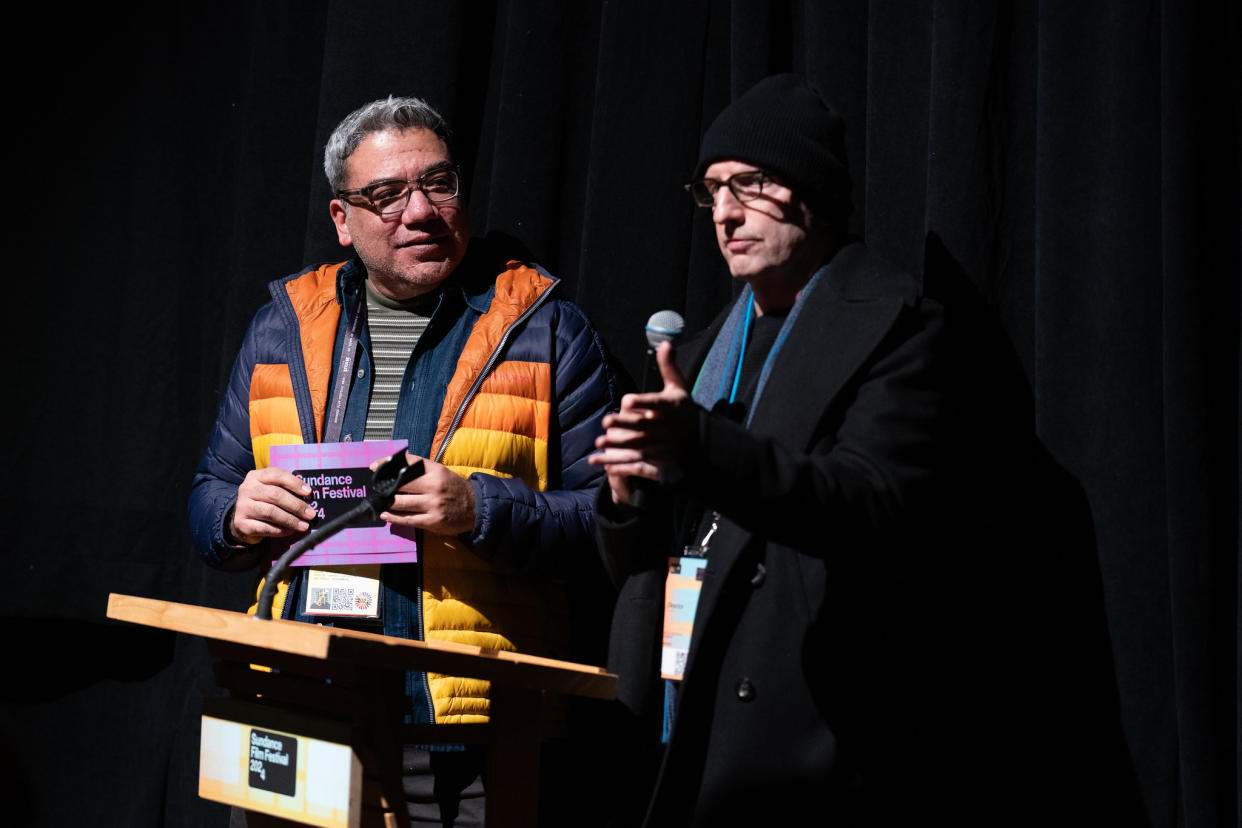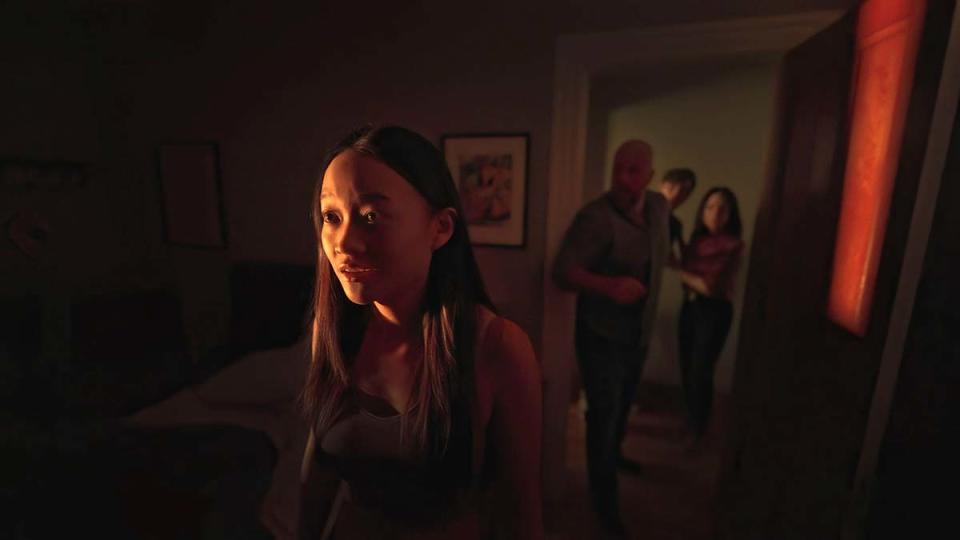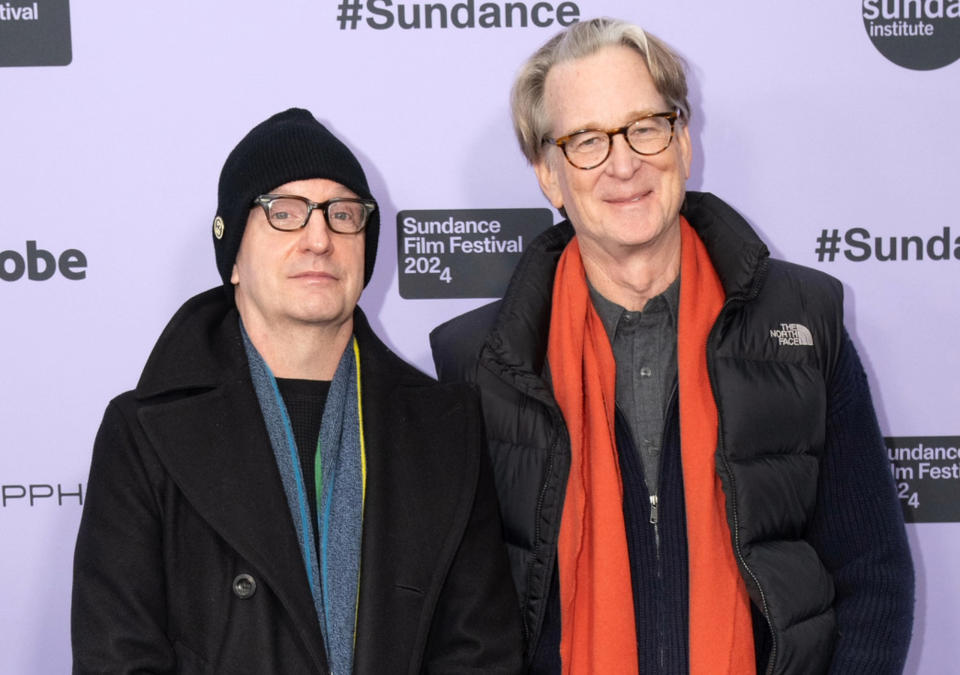Soderbergh’s ‘Presence’ Challenges Our Understanding of POV-Storytelling

In 1947 director Robert Montgomery tried something radical. In adapting Raymond Chandler’s “Lady in the Lake” the director attempted to mirror the first-person narrative style of the book with his camera. The viewer would see the movie exclusively through the eyes of detective Philip Marlowe, while never seeing the detective himself (played by Montgomery) except in shots where he sees his reflection in the mirror.
Both the MGM-released film and the formal experiment were failures. Pure first-person filmmaking had the opposite effect of what was intended, the formal experiment only distanced the viewer. Almost 80 years later conventional filmmaking wisdom remains that to effectively employ point-of-view shots they need to be bracketed by shots of the character — character looks, cut to see what they see, cut back to the character’s reaction to what they saw — to shape what the audience was looking at, and to draw them into the story.
More from IndieWire
With virtual reality headsets, there has been a new attempt at pure first-person visual storytelling. Users put on the VR headset and enter a virtual 360-degree space, taking on the point of view of the camera itself. While a handful of notable movie directors tried their hands at the new technology in the early days of VR, Steven Soderbergh has been vocal as to why this would never be the future of narrative movies. Soderbergh’s argument against it –in addition to the audience not wanting to put on headsets, and give up the communal viewing experience– was the same reason “Lady in the Lake” failed.
“[That] there’s no POV and reverse angle on a character who’s experiencing this is hugely limiting. That is how we engage with visual stories, is to watch the expressions of the characters so that we can read the emotions of what we’re experiencing,” said Soderbergh of first-person VR movies in 2022.
Ironically, at the 2024 Sundance Film Festival this week, Soderbergh unveiled a new film, “Presence,” that challenged decades of filmmaking convention.
“Presence” is an 85-minute feature film that unfolds entirely through the point of view of a ghost (or more accurately, a Presence, as the title alludes to) who watches a dysfunctional family of four move into a large suburban home and over time witnesses their most intimate and disturbing moments.
While the film as a whole does not unfold in real-time, each scene does, and is captured in a single, uninterrupted shot from the perspective of the Presence (Note: It’s possible, if not likely, Soderbergh used visual effects to digitally mask edits and combine shots). At the end of every scene/shot, the film cuts to black, before advancing in time to the next scene.

What’s remarkable about Soderbergh’s formal experiment is that it narratively works. Regardless if seen as a gimmick or a smart use of form, the experiment does not stop the viewer from being emotionally drawn into the drama of the highly dysfunctional family coming apart, nor the mounting mystery surrounding the Presence. While critics rarely 100 percent agree, reviews have been largely positive, and the sold-out Sundance audience was at the edge of their seats until the film’s end credits. [Reports of walkouts were inconsistent with what three IndieWire journalists, including this author, witnessed.]
During the “Presence” post-premiere screening Q&A, Soderbergh acknowledged his previous comments about the problems with first-person VR and admitted he entered the project not convinced his experiment would work.
“I had real questions about the choice,” said Soderbergh. “I’ve been beating this drum hard for a long time, ’It’s never gonna work,’ and then, I’m like, ‘No, the only way to do it is you never, you never turn around.’”
In an interview for the film’s press notes, Soderbergh elaborated:
“I’ve been convinced you don’t have a movie if you don’t have that — if you can’t see what the character’s feeling emotionally, you don’t have a movie,” said Soderbergh. “But here I am literally tearing down the structure that I’ve built. And my only justification is: Here, if you did a reverse, there wouldn’t be anything to see.”
In essence, Soderbergh seems to be arguing the conceit of it being the ghost’s point of view and not that of a character like Phillip Marlow, which might prove to be the exception that proves the rule. And it should be noted, Soderbergh (once again assuming cinematography duties under his pseudonym Peter Andrews) creates a distinct visual look that never lets the viewer forget they are looking through the eyes of a ghost-like figure. The mobile camera, operated by Soderbergh, has a degree of character performance to it in how it floats (sometimes with supernatural speed) through the house, as the viewer gets a sense the Presence is not a passive observer but both emotionally invested and searching for answers. Shot with an ultra-wide 14mm lens, there’s a noticeable distortion of space as the Presence pans to look around the house, especially in the large communal rooms (kitchen, living, and dining rooms) where the family gathers.

Also working in favor of the success of Soderbergh’s formal experiment is veteran screenwriter David Koepp, an accomplished director himself, who knew how Soderbergh was going to shoot the film before he started writing. Being presented as Soderbergh’s creative partner in this endeavor, it can’t be underestimated how much the veteran screenwriter was able to help solve narrative problems in terms of how information, character, and story were to be doled out considering the limitations the director was placing on himself.
And while there are a number of specific-to-this-film potential reasons why Soderbergh’s experiment worked, what’s most significant is that it did work. In a time when younger audiences are consuming increasingly less traditional scripted narrative film and TV and spending far more time playing first-person RPG games and watching videos shot from camera phones, it will be interesting to see if the POV breakthrough of “Presence” leads to further experimentation in first person visual storytelling. While at Sundance, it was interesting (if not a bit troubling) to hear both filmmakers and entertainment executives express in informal, off-the-record conversations a growing concern that traditional film language and narrative structures feel dated to a younger generation who spend far more time playing video games and watching YouTube.
While for Soderbergh, this is another in his long line of fascinating formal experiments — in which the director should be applauded for his willingness to fail, as well as how often he succeeds — for certain corners of the industry, “Presence” is more than fodder for cinephile discussion.
Best of IndieWire
Sign up for Indiewire's Newsletter. For the latest news, follow us on Facebook, Twitter, and Instagram.

 Yahoo News
Yahoo News 
